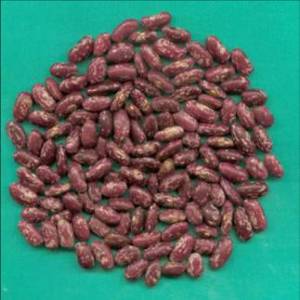


 Pole sitao grow well in lowland areas with temperature range of 35’C. It can manage to grow in the areas with low and high distribution of rainfall. The only problem is that the plant is disadvantageous during water-logging and dry season. It can grow in all types of soil from sandy loam to clayey soil even in acidic soil.
Pole sitao grow well in lowland areas with temperature range of 35’C. It can manage to grow in the areas with low and high distribution of rainfall. The only problem is that the plant is disadvantageous during water-logging and dry season. It can grow in all types of soil from sandy loam to clayey soil even in acidic soil.
Prepare the land thoroughly. Plow and harrow 3 times. Plow the soil with the deepness of 16 centimeters. Make furrows spaced 1.5 meters between rows to facilitate space for mechanical cultivation.
Let the soil analyzed to determine the correct pH level for the basis of fertilization. The common rate of application to the soil without any soil analysis is 5 bags of complete fertilizer (14-14-14) per hectare. Cover the applied fertilizer with thin layer of soil 3 centimeters thick. Add chicken manure and compost to have a better soil composition.
Plant 3-4 seeds per hill. Make a spacing of 40 cm. apart between hills and 1.5 meters between rows in open areas. But in areas with available shade (trees or bamboos) make a wider spacing. Estimated to use 4.5 kgs of seeds per hectare.After 10 days from sowing when the seedling started to emerge, do the thinning of weak seedlings and retain only 1-2 plants per hill.
With abaca or plastic twines webbed in between or crisscross to whatever post installed around the plants to support its stem and foliage.
You can do the hand weeding or use animal-drawn implement two weeks after the seedling emergence, during flowering stage and fruiting period. This is to eradicate all types of weeds that may affect the growth of the plants. It is also to allow the soil to aerate during the cultivation making the soil soft and manageable.
Additionally, use mulching to preserve moisture in the soil especially during dry season. Use rice straw or cogon grass.
Water the plants during the onset of dry weather regularly or anytime if urgently needed. Plants needs enough water for their growth and development. During rainy season, there should be enough irrigation canal to control water-logging.
There are many kinds of harmful insects and destructive fungal diseases. Necessary control is needed when detected early. There should be a periodic application of pesticides and fungicides depending on the degree of infection under manufacturer’s direction about the rate of chemical for application.
There are other methods more safe and economical, a non-chemical controls. Doing crop rotation every end of the harvest is a good idea. A local systemic control of hot pepper extract to be sprayed to the plants is also helpful to keep beanfly away from the plants one week after planting and next week depending on the degree of damaged. Aphids can be controlled by the use of soap spray or green-labeled pesticides. Do not use yellow and red label pesticides during the onset of pod bearing. It is not safe for consumers’ consumption. Practice botanical pesticides using hot pepper.
Harvest green pods (tender and soft) 8 to 10 days after flowering. If it exceed the ideal harvesting period, the pods become fibrous and not palatable for consumption. Pick the pods every 2 to 4 days. To store the harvested pods for a longer time, use coconut water. It can extend its shelf life.
In preparation for the next planting, prepare seeds by harvesting dry pods (matured). Extract the seeds out from the pods and then dry it until the moisture content is only about 10%. Protect the seeds by treating it with insecticides. This is to prevent or disinfect any decay-causing organisms and those insects harboring in the seeds during storage. Secure the seeds by placing it in a sealed container with charcoal to help decrease moisture content.



